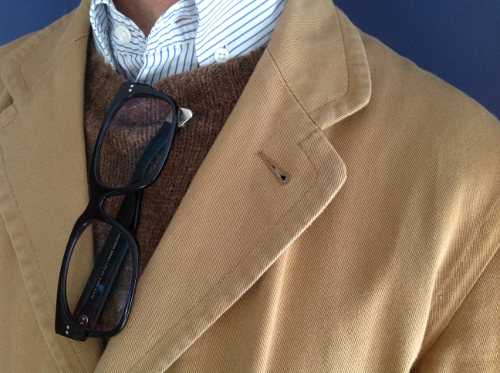Letter from Melbourne - Desert Rats to Desert Boots

The Clarks Desert Boot
Our Melburnian chum Bertie was looking down at his feet — as we all do from time to time — and contemplating the history behind his footwear — as we do less often. Lumme, did the Clark's Desert Boot have a story to tell.Bertie sought out his bonded writing paper and his trusty vintage Conway Stewart Dinkie fountain pen loaded with J. Herbin ink. It was time for a letter to The Tweed Pig...
Note: Conway Stewart 1905 went into administration last year, but there are plans to revive the brand. By whom? Made where? Seek out the vintage ones.
Letter from Melbourne
Clark's Desert Boots, to my mind, are an essential piece of British kit. I know some will never trust a Chap in suede shoes, but I say: read the history of these boots and you’ll see that few things could be more British.Clark's has been in the shoe business for long time, starting out in the 1820s in the Somerset village of Street with the concept of “Street cred” beginning shortly thereafter [etymologists please confirm.]
In the 1930s, Nathan Clark, shoe scion and young man up-for-adventure headed off to Spain – not in search of Tweedy’s beloved percebes – but to drive ambulances for the Republicans. By the outbreak of war, Clark saw service in Burma, where he helped supply Chiang Kai-Shek’s Nationalist Army. And it was out East that Clark first saw the sort of footwear that would inspire the modern desert boot: simple suede boots with minimal lacing and crepe rubber soles. The boots were worn by British veterans of the North African campaign who were rather glamorous figures known to affect cravats and scarves.
By the end of the war, Clark thought there’d be a market for these boots on the feet of civilians. While back in Britain he found it hard to initially convince his family to manufacture the shoe so he took his ideas to the Chicago shoe fair in 1947. The boots sold well to Americans and those nostalgic for the Britain of Empire days, with ads promoting them as 'authentic reproductions of British colonial footwear: the desert boot soled with genuine plantation rubber'.
By the 1950s, Clark had managed to expand the market for his boots with DB’s becoming part of the civilian uniform of each new generation of well-dressed young men starting from the mid ‘50s with trad jazzers, CND marchers, skiffle bands, mods, rude boys and even revolting Parisian students of May ’68.
Bertie's Suggestion
Clark’s Desert Boots are now 65 years old, and to celebrate that milestone I offer my suggestion on how to wear them.One, the boot itself. While there are a myriad of colours to choose from, I like a systematic approach to things and I go for light colour boots in summer, darker boots in winter. Right now, I have a current preference for Clark’s in ‘cola’ which I'm told is also a popular soft drink.
Two, owing to their association with the Desert Rats in their cravats, a scarf, a neckerchief or a cravat is a must. I suggest Peckham Rye's Poona Orange Silk Scarf.
Thinking of a chota peg in a Hill station somewhere?
Three, I think desert boots go best with what the French call déshabillé, the Italians call sprezzatura and you and I would call casual.
Therefore, I say cords or moleskin. I’d recommend Australia’s contribution to civilised dress: RM Williams Cleanskin 15 oz moleskin.
And four, to complete the look – weather dependant – it could be a duffel coat, a Harrington or an old tweed jacket; but for some reason, I feel inclined to honour the original wearers by choosing something that wouldn't look out of place in the Colonies: a belted safari jacket by Chucs.
I encourage your readers to watch this video from Clark’s and to see that Colonial Chic is only one way to wear this most versatile and enduring shoe.
Bertie Davies, Melbourne
@melbourneletter












